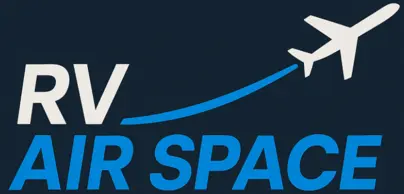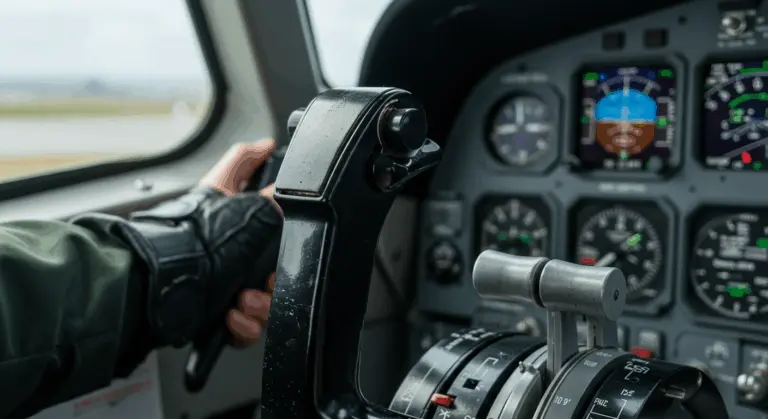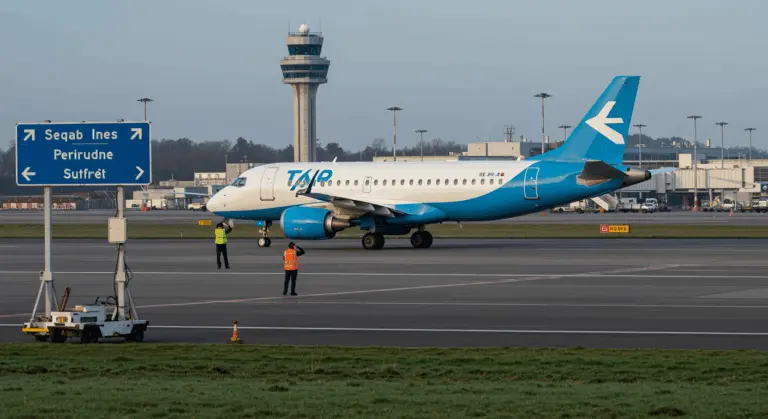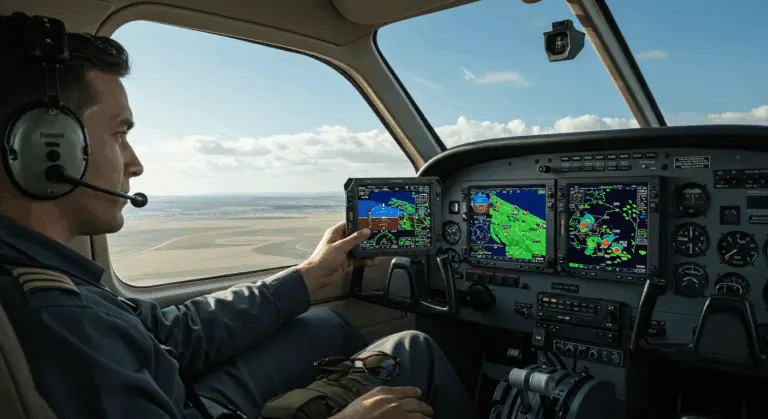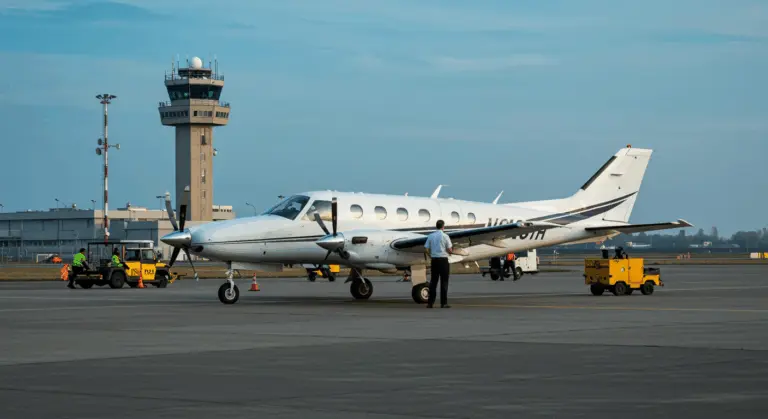Understanding the PRM Approach in Aviation
What is the PRM Approach?
A Precision Runway Monitor (PRM) approach enables independent, simultaneous operations on closely spaced parallel runways—a technology that significantly increases airport capacity. Designed for runways with centerlines between 2,500 and less than 4,300 feet apart, this represents a dramatic reduction from the standard 4,300-foot minimum required for conventional independent approaches. This allows Major airports can sustain high-capacity operations even when instrument meteorological conditions would otherwise force significant delays.
While approach courses in a PRM system generally run parallel, they may incorporate a subtle offset of 2.5 to 3.0 degrees depending on the specific runway separation at the airport. This slight angular difference helps create additional lateral separation between aircraft as they approach their respective runways.
At its core, PRM is a high-precision surveillance system that empowers air traffic controllers to monitor aircraft with exceptional accuracy. The system’s distinguishing feature is Its rapid update rate enables controllers to detect deviations from the approach path almost instantaneously—a crucial capability that ensures safety during these simultaneous landing operations.
This technology is especially valuable at busy hub airports with parallel runway configurations. Here, it maximizes runway utilization and operational efficiency without compromising safety—especially critical when poor visibility conditions challenge conventional operations.
Central to the PRM system’s safety architecture is the designated No Transgression Zone (NTZ)—a carefully defined buffer area between approach paths that aircraft must never enter. Dedicated controllers maintain continuous vigilance over this zone using the high-update rate surveillance system, ensuring immediate response capabilities if an aircraft strays from its assigned approach path.
Key Components of PRM Approaches
The PRM system’s effectiveness comes from several interconnected components working together:
Understanding the No Transgression Zone (NTZ)
The No Transgression Zone (NTZ) acts as the PRM system’s primary safety feature. This precisely defined 2,000-foot-wide corridor of airspace sits between the final approach courses of parallel runways, creating an inviolable buffer that no aircraft may penetrate—ensuring separation remains intact throughout the approach sequence.
PRM Approach Procedures
Precision Runway Monitor (PRM) approach procedures require careful preparation and strict adherence to specific protocols—essential for safety during simultaneous parallel runway operations. Pilots must conduct comprehensive briefings covering all PRM approach procedures and frequencies before execution. Pilots must reference The FAA’s ‘Attention All Users Page’ (AAUP), a specialized briefing document that provides critical, airport-specific information including approach charts, communication requirements, and emergency procedures tailored to each facility’s unique PRM implementation.
Modern flight deck technology has improved PRM safety. Advanced autopilots and flight directors now help maintain precision, helping pilots maintain exact approach paths with remarkable consistency. This has resulted in A notable reduction in breakout instruction frequency—evidence of how technology improves operational safety.
Breakout Instructions Explained
Breakout instructions represent the PRM system’s most critical safety intervention—the final safety measure when aircraft deviate from their approach paths. The scenario unfolds when an aircraft deviates from its assigned approach path and breaches the No Transgression Zone (NTZ), that protected airspace corridor between parallel runways. In these moments, air traffic controllers must act with lightning speed to prevent potential conflict.
These life-critical instructions arrive through a dedicated monitoring frequency that pilots must continuously monitor throughout the approach—no exceptions. The dedicated channel ensures these time-sensitive commands aren’t buried beneath routine communications on the primary approach frequency. When a breakout command comes through, pilots must respond instantly. No hesitation. No delay. Even before any Traffic Collision Avoidance System (TCAS) alerts might activate, the response must be immediate and decisive.
A typical breakout instruction cuts through radio chatter with unmistakable urgency: “N123AB, TRAFFIC ALERT! Turn right immediately heading 330, climb and maintain 3,000 feet.” The phraseology is deliberately direct and unambiguous—designed to convey the situation’s critical nature without room for misinterpretation.
Training and Certification for PRM
Pilots must complete specialized training to conduct PRM approaches—no shortcuts allowed. For commercial pilots, requirements are detailed in their company’s Operations Specifications, while general aviation pilots should reference the Aeronautical Information Manual (AIM). Important note: not all air carriers hold PRM operation certification.
The training curriculum encompasses essential topics, with pilots required to demonstrate proficiency in each area:
Simulator training is central to PRM certification, giving pilots practical experience in a controlled environment. Here, they practice everything from routine approaches to emergency breakout maneuvers, including specialized procedures like Simultaneous Offset Instrument Approaches (SOIL). This immersive training develops the muscle memory and split-second decision-making skills essential during actual operations.
Recurrent training ensures PRM qualifications remain current, keeping pilots sharp with all procedures and protocols. This comprehensive certification process guarantees that only properly trained crews conduct these demanding approaches—fundamental to the system’s exemplary safety record.
Airports Implementing PRM Approaches
PRM technology operates at four major international airports, each leveraging this advanced system to maximize capacity at facilities with closely spaced parallel runways:
These airports seamlessly integrate PRM with various precision instrument approach types:
The high-speed, high-precision radar system that makes PRM possible traces its origins to Raytheon’s innovative development work. This development allowed simultaneous close parallel approaches using conventional radar systems—making previously impossible operations routine.
Sydney Airport exemplifies PRM’s versatility, where Air services Australia operates a system supporting simultaneous GLS (GAS Landing System) and ILS approaches—demonstrating seamless integration with multiple precision approach technologies.
